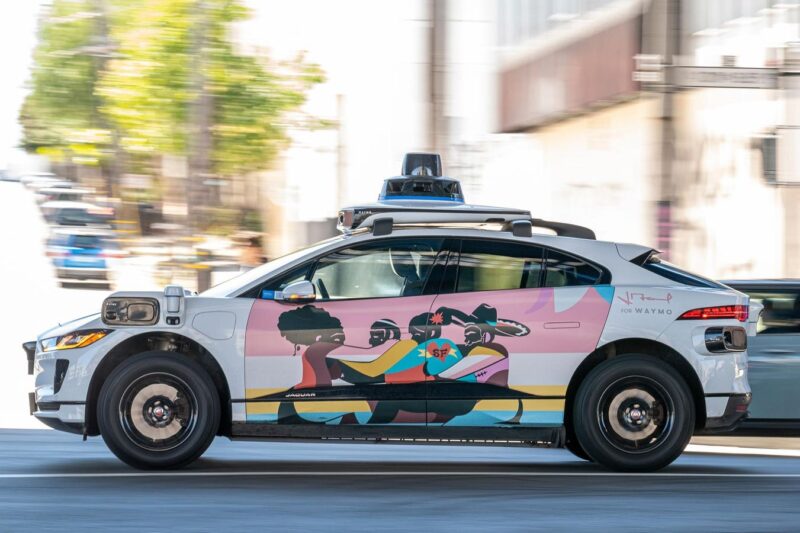Within two years, AVs could be in dozens of major metros. Will cities be ready to handle the curb, congestion, and transit impacts?
The Parking Industry Wants to Know: When Will AVs Be Everywhere?
At the National Parking Association (NPA) conference in early September, a key question was on parking operators’ minds: “How long before autonomous vehicles operate in most major U.S. cities—say, 25 of them?”
Autonomous vehicles are no longer confined to pilot zones or tech demos. Airports, ride-hail networks, and corporate mobility programs are all scaling rapidly. My forecast: within 24 months, AVs will be operating in most of the 25 largest U.S. metro areas. The question for cities is not if, but how prepared they will be.
A Waymo autonomous taxi in San Francisco, California, US, on Thursday Aug. 10, 2023. Photographer: David Paul Morris/Bloomberg
© 2023 Bloomberg Finance LP
Beyond the Hype: Planning for Growth, Not Gridlock
AVs promise safer, more efficient, and more accessible transportation. But cities must anticipate the operational shifts that accompany scaling:
- Travel patterns may change: AVs could encourage additional trips or longer distances. Thoughtful planning can ensure streets handle this growth.
- Empty vehicle repositioning: Circulating vehicles between passengers can add mileage. Optimized dispatching and curb management can mitigate impacts.
- Curb and parking shifts: Robotaxis will rely heavily on pick-up/drop-off zones. With proper planning, cities can turn this into an opportunity for more efficient curb usage.
- Integration with transit: AVs can serve as feeders for first/last mile trips, complementing—not competing with—public transit.
The key is proactive management: AVs themselves don’t guarantee congestion, but how cities regulate and guide them will determine the outcome.
AV Scaling Is Already Underway
Recent developments signal that AV deployment is accelerating across the industry:
- Airport testing: Controlled deployments at locations like San Francisco International Airport offer real-world testing environments and pave the way for broader urban integration.
- Ride-hail partnerships: Collaborations between AV developers and ride-hailing platforms expand access to the public and operational reach.
- Corporate mobility programs: Companies are embedding AV rides into employee travel programs, creating demand and operational experience.
These initiatives collectively form a playbook for scaling AVs: start in structured or semi-private settings, refine operations, and expand to urban centers.
Forecasting the Next 24 Months
Based on these trends, I project broad AV availability in 25 major cities by late 2027. Factors supporting this prediction:
- Regulatory scaffolding: More states and municipalities are streamlining AV permitting.
- Repeatable deployment models: Lessons from early adopters reduce friction for new cities.
- Market and operational momentum: Airports, ride-hail, and corporate programs are creating repeatable entry points.
The timeline is ambitious, but the trajectory is clear: AVs are moving from pilots to scale, and cities must be ready.
Strategic Opportunities for Cities
Instead of repeating the full June article’s policy list, this version highlights three fresh levers:
- Dynamic curb management: Charge for empty vehicle repositioning and prioritize pooled or electric fleets to reduce friction and encourage sustainable operations.
- Airport-to-city staging: Airports can serve as controlled hubs to test operations, inform city-wide scaling, and create predictable routing for robotaxis.
- Corporate mobility alignment: Use corporate partnerships to shape service patterns, data sharing, and fleet management standards that benefit public mobility goals.
By focusing on these forward-looking levers, cities can shape outcomes without reiterating the full suite of standard policies covered previously.
The Real Test Isn’t Technology — It’s City Readiness
Autonomous vehicles are already moving beyond pilots and into everyday mobility. The real question for urban leaders is not if AVs will arrive in dozens of metro areas within two years—it’s whether cities will be ready to manage them effectively.
The message is clear: focus on strategic deployment zones, dynamic curb and fleet management, and coordinated policy frameworks. Done right, AVs can enhance mobility, complement transit, improve safety, and create more efficient urban streets.









